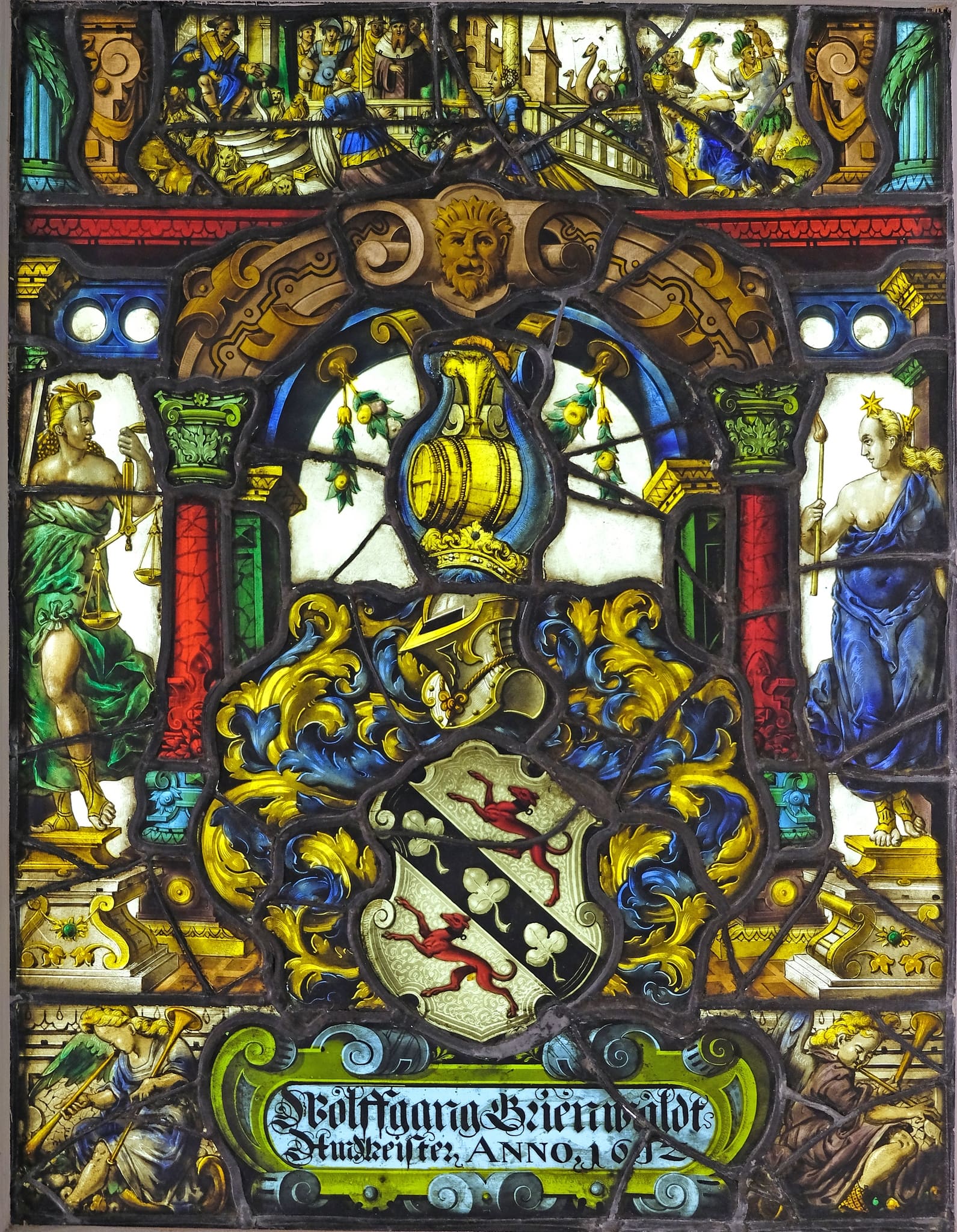A heraldic shield with elaborate mantling is silhouetted against a white background and rests on a tiled floor. It is framed by green pillars and red columns that support an elaborate mauve arch festooned with volutes and a central boss with a man’s head. Virtues standing on sculpted podiums flank the shield. To the left is the personification of Justice dressed in a green robe and holding scales and a sword. To the right is the virtue of Faith dressed in a blue robe and holding a burning candle and book. Above a red architrave an additional scene shows the Queen of Sheba approaching king Solomon who is seated on his lion throne on the left. Her elaborate retinue carries fruits, flowers, and coffers of gold and leads exotic animals such as camels, parrots, and monkeys. At the bottom of the panel a yellow and white inscription cartouche with scrollwork borders is flanked by musical angels.
11M31 · Foi, 'Fides'; 'Fede', 'Fede catholica', 'Fede christiana', 'Fede christiana catholica' (Ripa) ~ une des trois Vertus théologales
11M44 · Justice, 'Justitia'; 'Giustitia divina' (Ripa) ~ une des quatre Vertus cardinales
46A122 · armoiries, héraldique
71I331 · la reine de Saba arrive chez Salomon avec une suite de chameaux chargés de présents
Arms of Grienwaldt (Grünenwald, Grünwald), Wolfgang: Argent a bend sable three clovers argent between two greyhounds gules Crest: a helm to dexter surmounted by a barrel or; mantling azure and or.
Wolffgang Grienwaldt/ Ammeister Anno. 1612 (Wolfgang Grienwaldt, chief magistrate, the year 1612)
none
